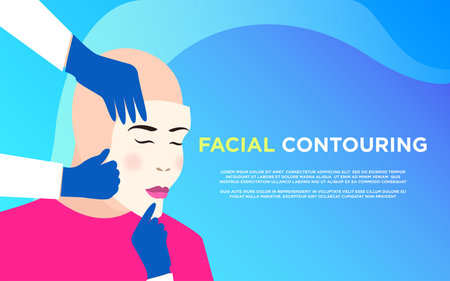Introduction to Botox in the UK
Botox has become a household name across the United Kingdom, synonymous with non-surgical aesthetic enhancement and wrinkle reduction. Originally developed for medical purposes, Botox—short for Botulinum toxin type A—was first approved in the UK for cosmetic use in the early 2000s and has since gained widespread acceptance. Its clinical applications extend beyond aesthetics, with uses in treating medical conditions such as chronic migraines and excessive sweating. In the British beauty landscape, Botox is now one of the most sought-after treatments, embraced by both men and women seeking subtle yet effective rejuvenation. Its popularity is bolstered by rigorous safety standards set by regulatory bodies like the Medicines and Healthcare products Regulatory Agency (MHRA), ensuring that treatments are both safe and reliable when performed by qualified practitioners. As demand continues to rise, so too do misconceptions about what Botox can achieve and how it works—making it essential to distinguish fact from fiction within the UK context.
2. Common Myths Surrounding Botox
In the UK, Botox has become a household name, often associated with celebrities and the quest for eternal youth. However, British society and media continue to circulate several myths about this popular aesthetic treatment. It is crucial to separate fact from fiction to ensure individuals make informed decisions based on accurate information rather than hearsay or tabloid sensationalism.
Prevalent Misconceptions in the British Context
The following table highlights some of the most widespread myths about Botox within Britain, alongside the factual reality:
| Myth | Reality |
|---|---|
| BOTOX results in a ‘frozen face’ that lacks any expression. | When administered correctly by a qualified practitioner, Botox allows for natural facial movement while softening lines. |
| Botox is only for celebrities or the wealthy elite. | Botox has become widely accessible and is used by people from various backgrounds across the UK seeking subtle rejuvenation. |
| BOTOX treatments are painful and dangerous. | Modern techniques ensure minimal discomfort. When performed by registered professionals, Botox is considered safe with a strong track record in both cosmetic and medical fields. |
| BOTOX is addictive and requires constant maintenance. | Treatments are temporary and can be spaced according to individual preference; there is no physical addiction involved. |
Media Influence and Public Perception
British tabloids and social media platforms often amplify these misconceptions, sometimes focusing on extreme cases or celebrity mishaps. This can lead to unwarranted fears or unrealistic expectations among the public. In reality, responsible practitioners tailor Botox treatments to the individual’s needs, prioritising safety and achieving natural-looking results.
Cultural Attitudes Towards Ageing
The British attitude towards ageing gracefully is also reflected in how Botox is discussed. While some view it as an unnecessary vanity, others see it as a proactive step towards self-care. Open conversations and factual education are essential for dispelling lingering myths and helping patients make choices that align with their personal values and goals.

3. Busting the Myths: What the Evidence Really Says
When it comes to Botox, misconceptions abound—often fuelled by sensational headlines and hearsay rather than clinical reality. To truly understand Botox within the British context, it’s essential to examine what robust scientific research and medical evidence actually reveal about its safety, efficacy, and effects.
Is Botox Dangerous? Understanding the Safety Profile
One prevalent myth in the UK is that Botox is inherently dangerous or toxic. However, extensive clinical studies demonstrate that when administered by qualified professionals, Botox (botulinum toxin type A) is remarkably safe. The doses used for cosmetic procedures are minute compared to those that could cause harm. Adverse effects are rare and typically mild—such as temporary bruising or swelling at the injection site. Regulatory bodies like the MHRA (Medicines and Healthcare products Regulatory Agency) maintain strict oversight, ensuring treatments meet rigorous safety standards familiar to British patients.
Myth: Botox Freezes Your Face
This is perhaps one of the most pervasive misconceptions—fuelled in part by celebrity culture and media portrayals. In reality, proper application of Botox allows for natural facial movement while reducing dynamic wrinkles. Skilled UK practitioners employ conservative dosing tailored to each individual’s facial anatomy and desired outcome, preserving authentic expressions rather than creating a “frozen” look.
Myth: Botox Is Addictive
There is no scientific basis for the notion that Botox is physically addictive. What some might interpret as “addiction” is more accurately described as patient satisfaction with visible results, leading to repeat treatments every few months to maintain their appearance. There are no withdrawal symptoms or dependency issues associated with discontinuing treatment—any changes simply revert gradually back to baseline over time.
The Truth About Long-Term Use
A common concern among British patients is whether repeated use of Botox will have negative long-term effects. Numerous longitudinal studies confirm that continued use does not increase health risks; in fact, some evidence suggests that regular treatments may help soften lines over time due to muscle relaxation. As always, outcomes depend on professional administration by trained clinicians following best practice guidelines.
In summary, credible scientific evidence consistently debunks these myths, reinforcing that when performed responsibly under UK regulations, Botox is a safe and effective option for those seeking aesthetic enhancement without compromising natural expression or wellbeing.
4. Understanding the British Approach to Botox
When it comes to Botox, the British perspective is shaped by a unique blend of cultural attitudes, social etiquette, and comprehensive legal regulations. Understanding these factors is essential for both practitioners and clients seeking treatment in the UK.
British Attitudes Towards Botox
In Britain, subtlety and natural results are highly valued. Unlike some cultures that may favour more dramatic transformations, British clients often prefer enhancements that are discreet and maintain their authentic appearance. This aligns with a broader national inclination towards modesty and understatement in personal presentation.
| Aspect | British Perspective |
|---|---|
| Results Desired | Natural-looking, subtle improvements |
| Attitude to Cosmetic Procedures | Cautious, privacy-oriented, sometimes reserved or discreet about treatments |
| Social Acceptance | Increasingly mainstream, but still subject to some stigma if perceived as excessive |
Etiquette Surrounding Botox Treatments
The British approach to discussing cosmetic procedures like Botox is typically understated. Open conversations about treatments are becoming more common, especially among close friends, but many still prefer to keep such decisions private. When it comes to etiquette, respect for personal choices and discretion is paramount. Practitioners are expected to uphold confidentiality and foster a supportive environment without judgement.
Legal Regulations in the UK
Britain has some of the most stringent regulations in Europe regarding non-surgical cosmetic treatments. The administration of Botox is legally restricted to qualified medical professionals. Additionally, advertising guidelines set by the Advertising Standards Authority (ASA) prohibit misleading claims and mandate clear communication about potential risks.
| Regulatory Aspect | Description in the UK Context |
|---|---|
| Who Can Administer Botox? | Only registered doctors, dentists, nurses, or pharmacists with appropriate training and supervision can administer Botox. |
| Age Restrictions | Banned for under-18s except for specific medical reasons. |
| Advertising Rules | No direct advertising of prescription-only medicines like Botox to the public; strict guidelines on promotional language. |
| Consultation Requirements | A face-to-face consultation with a qualified prescriber is mandatory before treatment. |
Navigating British Norms for a Positive Experience
For those considering Botox in Britain, it’s important to choose reputable clinics that comply with all legal requirements and prioritise patient safety. Engaging in open yet respectful discussions with practitioners ensures that individual expectations align with realistic outcomes while upholding the trusted standards of British healthcare culture.
5. Safety and Professional Standards in the UK
One of the most persistent myths surrounding Botox is that it is unsafe or poorly regulated, especially when compared to other countries. In reality, the UK cosmetic industry operates under some of the strictest safety protocols and professional standards worldwide. The Medicines and Healthcare products Regulatory Agency (MHRA) rigorously oversees the use of botulinum toxin, ensuring that only approved products are available for cosmetic procedures.
Additionally, practitioners administering Botox must meet exacting qualifications. In the UK, only registered medical professionals—such as doctors, dentists, or nurses with additional training—are permitted to carry out injectable treatments. Clinics are expected to adhere to guidelines set by organisations like the General Medical Council (GMC), Care Quality Commission (CQC), and the British Association of Cosmetic Nurses (BACN). These regulatory bodies emphasise ongoing professional development, safe practice environments, and full transparency for patients considering treatment.
Furthermore, consultations prior to any Botox procedure are standard practice in reputable British clinics. During these consultations, practitioners assess medical history, discuss realistic expectations, and outline potential risks. This patient-centred approach not only aligns with NHS values but also ensures individuals receive tailored care designed to maximise safety and satisfaction.
In summary, concerns about Botox safety in the UK are largely unfounded when treatment is sought from qualified professionals. The robust regulatory framework governing cosmetic injectables upholds high standards of care, providing patients with peace of mind and reinforcing Britain’s reputation for excellence in aesthetic medicine.
6. Post-Treatment Realities: What to Expect After Botox
Many people in the UK approach Botox treatments with expectations shaped by myths and hearsay, particularly regarding what happens after the procedure. It’s essential to distinguish between typical post-procedure experiences and common misconceptions, especially as British clinics adhere to strict guidelines and best practices.
Normal Reactions versus Myths
Directly after receiving Botox injections, it is completely normal to experience slight redness, mild swelling, or tiny bumps at the injection sites. These effects are temporary and usually resolve within a few hours. Some British patients worry about significant bruising or visible marks, but reputable practitioners use fine needles and gentle techniques to minimise such risks.
Misconception: Immediate Results
A prevalent myth is that Botox delivers instant results. In reality, most people in the UK notice the smoothing of lines and wrinkles starting from three to five days post-treatment, with full effects visible after up to two weeks. This gradual onset is consistent across high-quality clinics throughout Britain.
Aftercare Best Practices in the UK
UK-based practitioners typically advise avoiding strenuous exercise, excessive heat, and alcohol for 24 hours following treatment. Patients are also instructed not to rub or massage the treated area to prevent migration of the product. Adhering to these standard recommendations ensures optimal outcomes and minimises complications.
Addressing Safety Concerns
A common misconception in Britain is that side effects are frequent or severe. In fact, when administered by qualified professionals adhering to UK regulations, adverse reactions are rare and generally mild. Clinics registered with the Care Quality Commission (CQC) maintain robust safety protocols that further reduce risks for British patients.
Setting Realistic Expectations
The post-treatment phase should not involve dramatic facial changes or loss of expression—another myth sometimes perpetuated by media portrayals. Instead, most clients in the UK experience natural-looking enhancements that preserve their individuality while softening unwanted lines.
When to Seek Advice
If any unusual symptoms occur—such as prolonged bruising, persistent pain, or signs of infection—British patients are encouraged to contact their clinic promptly. Reliable providers will offer follow-up appointments as standard practice, ensuring all concerns are addressed professionally.
Understanding the realities of post-Botox care helps demystify the procedure for those in the UK, empowering individuals with accurate knowledge rather than unfounded fears or unrealistic expectations.
7. Conclusion: Making Informed Decisions About Botox
In summary, understanding the realities of Botox is essential for anyone considering this popular cosmetic treatment within the UK. By separating myths from facts—such as dispelling the notion that Botox leads to a ‘frozen’ appearance, or that it is unsafe when administered by qualified professionals—readers can approach their choices with confidence. Culturally in Britain, there’s an increasing emphasis on subtlety and natural enhancement rather than dramatic transformation, and modern aesthetic clinics uphold these values with tailored, patient-focused care. It’s crucial to consult with GMC-registered practitioners who respect your individual needs and provide transparent information about what to expect before and after the procedure. Armed with accurate knowledge and culturally relevant advice, you are empowered to make informed decisions about Botox that align with your personal goals and the prevailing British standards of beauty and professionalism.


